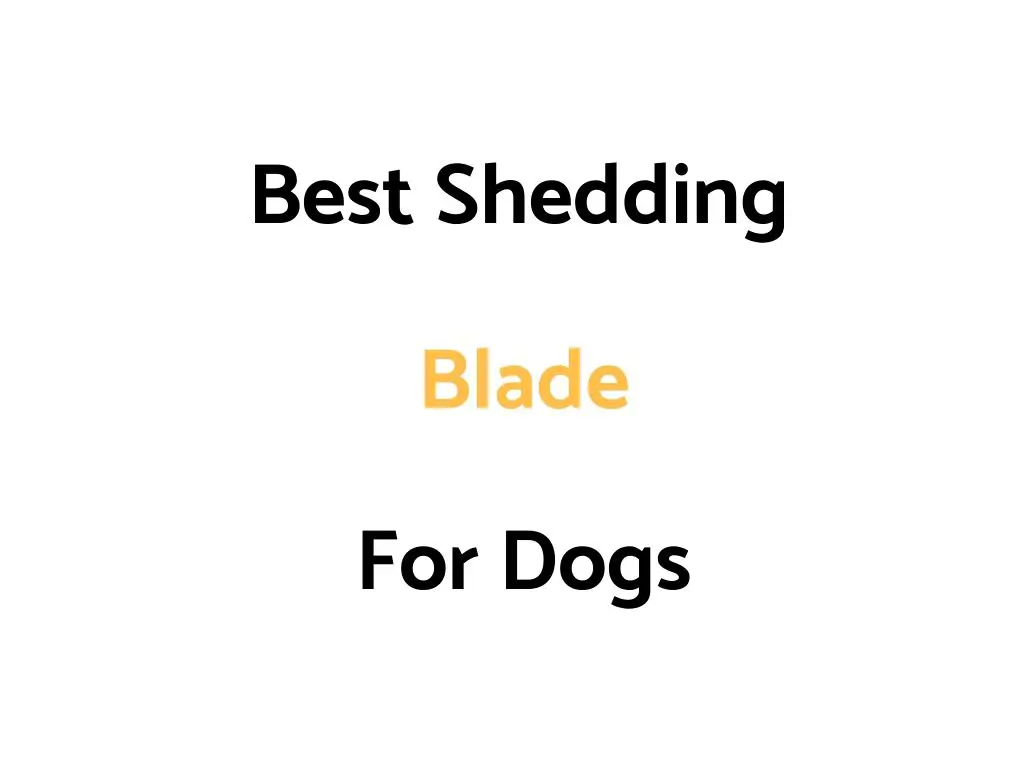In this guide, we look at what might be one of the best shedding blades for dogs.
We also briefly discuss what a shedding blade might be used for.
We also mention some other dog coat grooming tools you can use like brushes, combs, deshedding tools, and undercoat rakes.
Let’s take a look!
(NOTE: this is a general information guide only, and is not professional advice, or a substitute for professional advice. A qualified vet or animal expert is the only person qualified to give you expert advice in regards to your pet/s)
(*Friendly Disclosure – links to retailers or brands on this page may include affiliate links, and we may receive a commission when you purchase through these links)
Best Shedding Blade For Dogs
One of the top shedding blades might be the:
Best Shedding Blade For Dogs: Review
Safari (By Coastal) Dual Sided Dog Shedding Blade
A double sided shedding blade for most coat types, but most suited to medium to large breeds
One side of the blade has coarse teeth for thicker and longer hair, and the other side has finer teeth for shorter and finer fur
You use it be using the blade straight, or looping it, and applying very light pressure and dragging it along your dog’s coat – it should pick up loose hair as you pull it along
Designed to be used with a brush after use to smooth the coat out
Best Shedding Blade For Dogs: Buyer’s Guide
What Might A Dog Shedding Blade Be Used For?
A shedding blade is used to remove loose hairs from a dog’s coat, and specifically helps with dogs that shed or dog’s with an undercoat.
Safety & Using A Shedding Blade
Read the instructions before using a shedding blade.
They might say to only apply light pressure with the blade.
Using A Shedding Blade vs A Brush, Comb, Deshedding Tool Or Rake
A shedding blade is mainly used to remove loose hairs.
A brush or a comb can be used for dematting and detangling, as well as finishing a coat.
Deshedding tools and rakes can be used for dematting and removing loose hairs from the undercoat.
Some brushes can be an all around tools that detangle, remove loose hairs, and finish the coat.
If you use a shedding blade, you usually have to use a brush or comb afterwards.
Read more about the different dog coat grooming tools in this guide.
Dog Slicker Brushes vs Pin & Bristle Brushes vs Combs vs Deshedding Tools vs Undercoat Rakes vs Shedding Blades: Buyer’s & FAQ Guide
We’ve put together this guide which includes some buyer’s information and answers to FAQs about different dog coat grooming tools such as:
Main priorities when brushing a dog’s coat
Different types of dog brush grooming tools and their uses – Dog Slicker Brushes vs Pin & Bristle Brushes vs Combs vs Deshedding Tools vs Undercoat Rakes vs Shedding Blades
Some of the most popular dog brush grooming tools
Links to review guides of the different types of dog brush grooming tools
Which dog brush grooming tool to get
The best dog brush grooming tool for different dog coat, hair and skin types
Considerations for dog brush grooming tools
Considerations for dogs that are being groomed
How To Brush A Dog’s Coat
This guide outlines some steps and tips for brushing a dog’s coat.
Friendly Disclaimers
TheDailyShep.com is a participant in the Amazon Services LLC Associates Program, an affiliate advertising program designed to provide a means for sites to earn advertising fees by advertising and linking to Amazon.com.
Amazon and the Amazon logo are trademarks of Amazon.com, Inc., or its affiliates.
Additionally, TheDailyShep.com participates in various other affiliate programs, and we sometimes get a commission through purchases made through our links.
TheDailyShep.com are not veterinarians, or animal professionals/experts. Information provided is for informational purposes only – it is not a substitute for professional or qualified advice.
The information is based on either our own thorough research, and/or own experiences, as a means of free speech.
By consuming this information, you accept that TheDailyShep.com do not have client or patient relationship with you, and TheDailyShep.com are not advising you to act on anything you read.
You should always consult your own veterinarian, animal expert, or health care professional and follow their advice before making decisions on all matters.
You can find our full set of disclaimers and T & C’s in the footer of this site.
Enjoy your reading, and thank you for being here
','' ); } ?>